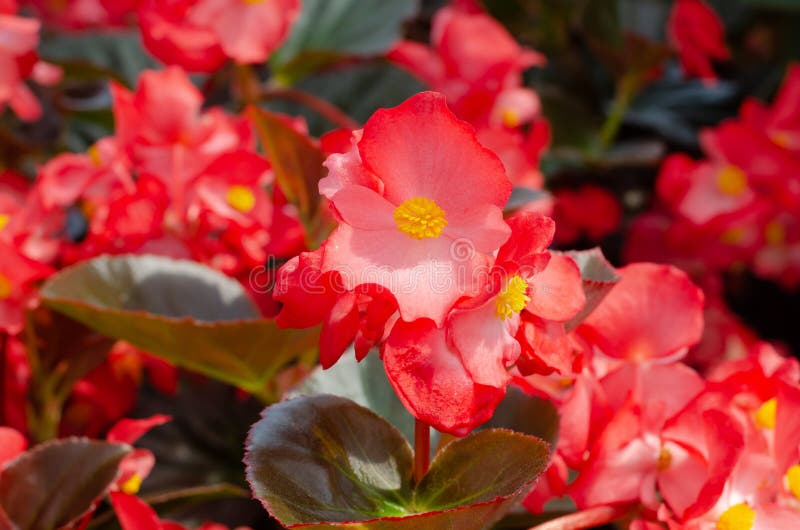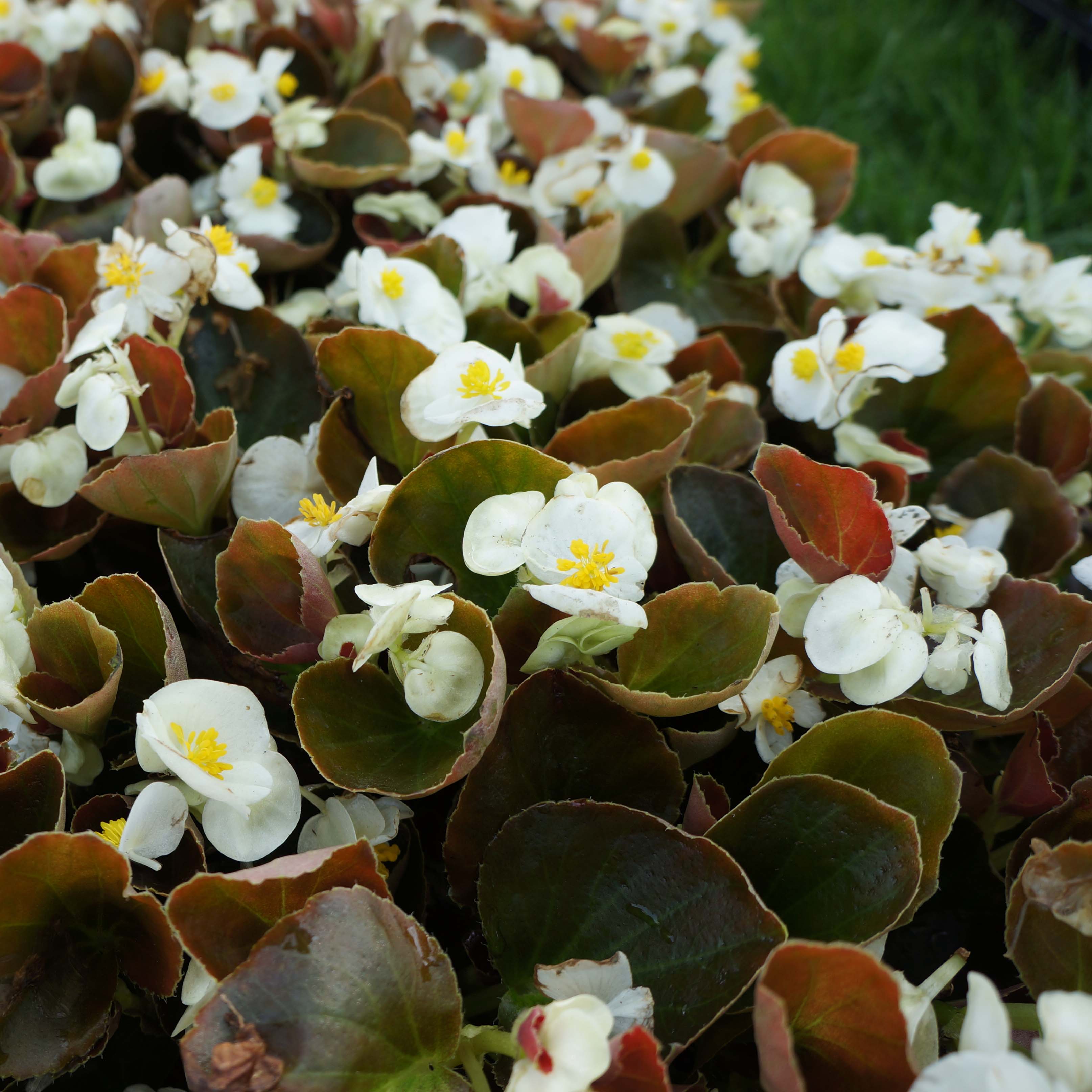


‘Fimbriata’ Begonias have fringed sepals, and ‘pendula’ varieties have a trailing growth form that is ideal for hanging baskets. ‘Picotee’ refers to sepals with edges that contrast with the principal colour, but only if the colours are considered to blend: if they do not, then ‘marginata’ is used.

The labelling and description of the complex array of Begonia types is far from straightforward, especially when looking beyond the generic mixed collections available from garden centres and supermarkets. Many other types of Begonia are grown in conservatories and as houseplants for their foliage rather than their flowers, but this article focuses mainly on the garden varieties that are grown as bedding and in containers, including the semperflorens group, or wax begonias. They are generally listed under the name Begonia x tuberhybrida. The familiar garden bedding Begonias are mostly bred from seven colourful species found in the Andes Mountains of Peru in the mid-19th century. The first pants were brought to Europe in the mid 1800s. He named the plant after the botanist Michel Begon who was also Governor of Haiti.

The first western plant hunter to describe a Begonia was a Franciscan monk called Charles Plumier in Brazil in 1690. Some types of Begonia also have attractive bronze or variegated foliage. The colour comes from the flower’s sepals rather than petals. As such, they are not hardy in the UK, and can only be grown outdoors in the summer.īegonia flowers come in a wide range of intense reds, pinks, oranges and yellows, and also cooler white. There are thought to be some 900 species of begonia, distributed across the tropical and subtropical forests of South and Central America, Africa, and southern Asia. They are easy to look after and will provide continuous colour throughout the summer until the first frosts, even in semi-shade. They are also widely used in traditional public park summer bedding schemes. To make a mini greenhouse, cover the pot with a plastic bag and keep the soil moist until the cutting roots.While not to everybody’s taste, Begonias are nevertheless popular and colourful bedding plants that find their way into many window boxes, containers and hanging baskets each summer. Place a 3-4 inch cutting from a healthy stem in a moist potting mix pot. Wax begonias can be propagated through stem cuttings. In the spring, repot with new potting mix and a slightly larger pot. Wax begonias should be replanted every 1-2 years or when the roots outgrow the pot. Humidity:īecause wax begonias prefer high humidity, consider placing a humidifier near the plant or placing the pot on a tray of pebbles filled with water. Use a fungicide or insecticidal soap to address these issues. Wax begonias are relatively pest and disease resistant, but they are susceptible to powdery mildew and mealybugs. Remove any yellow or dead leaves as needed. To encourage bushy growth, pinch back the tips of the stems. Fertilizer:ĭuring the growing season, feed the wax begonia a balanced fertilizer every 4-6 weeks. Place them away from cold drafts and heating vents. Wax begonias prefer temperatures ranging from 65 to 75 degrees Fahrenheit (18 to 24 degrees Celsius). Place them near a window that receives bright, filtered light or, if necessary, use artificial light. Wax begonias prefer indirect, bright light. Overwatering can cause root rot, so avoid it. Wax begonias prefer moist soil that is evenly moist, so water them when the top inch of soil feels dry to the touch. Plant the wax begonia at the same depth it was originally in its container. Choose a pot with good drainage and fill it with a potting mix that drains well.


 0 kommentar(er)
0 kommentar(er)
